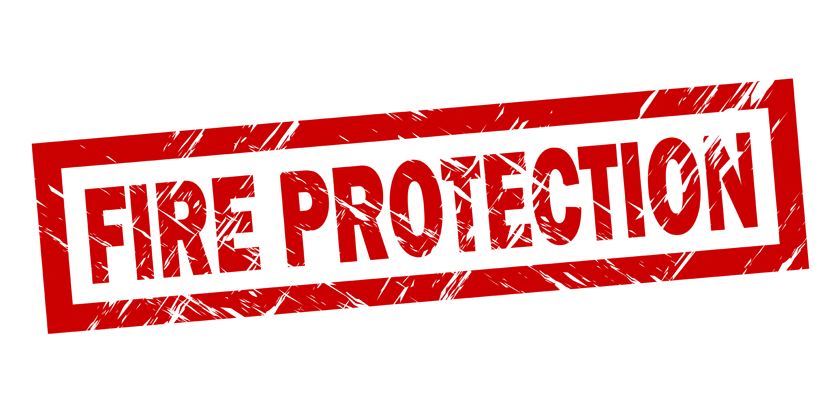
The word certification is derived from joining together two Latin words, “certe” (meaning certain) and “facere” (to make). Certification describes the common practice with which the fulfilment and compliance with certain standards or requirements should be realised and verified.
As a rule, products, services, processes. persons and also systems can be certified. Usually, the certifications and the conformity assessments they are based upon are carried out by independent certification bodies. With the certification for fire-protection applications, the following three certification bodies and acceptance marks have been established.
Leading certification bodies for fire-protection application
- VdS – Schadenverhütung GmbH
VdS, with its headquarters in Cologne, is today one of the most renowned institutions for corporate safety, with a focus on fire protection, security and natural hazard prevention. Among the services that the company offers, in addition to the certification of products, are also risk assessment, testing of equipment and a broad educational offering. Particularly in fire protection, the VdS seal of approval enjoys an excellent reputation and is required on all equipment used within fire protection within German-speaking countries. As the basis for being marked with the VdS seal of approval, there is an acceptance procedure based on the applicable DIN, EN and ISO standards as well as VdS’s own guidelines. - LPCB – Loss Prevention Certification Board
The Loss Prevention Certification Board is a part of the BRE (Building Research Establishment) Group. The BRE Group focuses on research, consultancy and testing in the building industry. Among their services are also certifications and acceptances, among others, in the field of fire protection and safety. These certifications under the marking and logo of the LPCB are mostly important in Great Britain, the Middle East and the Asia-Pacific region. Just as with the VdS, the LPCB uses EN and ISO standards as well as their own guidelines as a basis for certification. Meanwhile, there is a cooperation between VdS and the LPCB with the aim of recognising the existing certifications and testing and thus to simplify and to speed up the certification process. - UL – Underwriters Laboratories
Underwriters Laboratories – founded in 1894 – is a US-American product certifier. Unlike the VdS or the LPCB, their certifications not only extend to the construction, fire protection and safety industries, but rather across a much wider spectrum. This spectrum covers, for example, standards for refrigeration plants, lithium batteries, ice machines, cabling, … . Especially within the American market, where VdS and LPCB are not represented, UL approval is particularly important. However, also in the Middle East and the Asia region, UL certification for fire-protection applications plays a major role.
The acceptance procedure
Typically, the acceptance procedure is triggered with the relevant certification body by the manufacturer or the provider of the services. First, the applicant must submit the corresponding product or project documentation for testing by the certification body. The notified body then develops a test plan based on the national or international standards to be used and the guidelines of the certification body itself. In the case of pressure measuring instruments and pressure switches for use in fire protection, DIN EN 12094 – 10, for example, which controls the testing and requirements for components, can be used as a basis. The tests contained within this should ensure that the requirements of the standards and guidelines are fulfilled. Thus, amongst others, functional testing, temperature testing and also even corrosion testing in an atmosphere of sulphur dioxide are carried out.
A positive test report is imperative for gaining the certification. After that, confirmation of conformity follows with the issuance of the certificate. With the issuing of the certificate, the product or service may carry the acceptance marking. Usually, the certificate will be provided with a validity duration of a few years. Even after the issuance of the certificate, during the complete validity duration, product monitoring measures, such as regular production audits and product inspections are required. Both the acceptance procedures and also the subsequent monitoring measures are very costly, however, the holder of the marking also has extensive marketing opportunities and competitive Advantages.
Conclusion
Certification for fire-protection applications is dominated by the three largest acceptance marks of VdS, LPCB and UL. Virtually no extinguishing system is supplied without certification. Accordingly, the use of certified components also simplifies the building and approval processes of the OEMs. Therefore, WIKA also offers pressure gauges and components that are already approved.
Note
WIKA offers both approved pressure gauges and approved components for fire-protection applications. For example, the model 111.12.040 pressure gauge and also the model PGS11.040 and model PGS21.050 pressure gauges with switch contacts are approved in accordance with VdS and also LPCB as instruments for use in fire-extinguishing systems. Thus, WIKA is the only manufacturer worldwide which has VdS and also LPCB approved pressure gauges and also pressure gauges with switch contacts in its product programme. In addition, the instruments are also suitable for use in fire-extinguishing systems with UL marking. Should you have any further questions, your contact person will be at your disposal.

